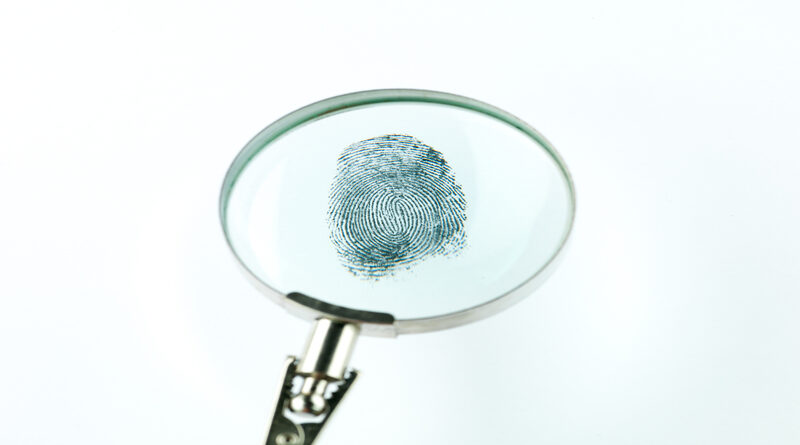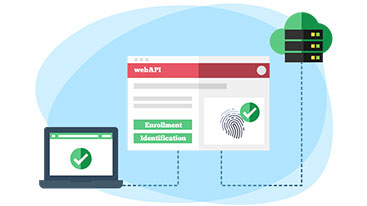2016 Biometric Industry Year-End Review
2016 will be remembered as a prolific year for the biometric industry. More countries have started integrating biometric identification checks for government services including:
- Border security at airports
- Patient identification at hospitals
- Inmate identity at prisons and jails
Private companies are also leaping into the world of biometrics. 2016 brought a surge of private investment into the use of biometrics to help:
- Improve workforce management efficiencies
- Replace passwords and PINs
- Ensure accurate financial transactions with a strong audit trail
At the end of 2016 we can safely say that the biometric industry shows continued strong growth potential and is now, perhaps used more than ever around the globe and well positioned to continue its spread to additional industries in the near future.
2016 biometric year in review
Top 5 Biometrics Trends in 2016
We identified the top 5 biometric trends for 2016 as follows:
- Multi-Factor Authentication
More end users are now seeking to implement multi-factor authentication system as part of their biometric deployments. They realize that multi-factor biometrics are more secure and reliable than a single credential authentication system. Recently technology giant Windows Hello brought multifactor authentication to Intel security’s True Key. In addition, a recent report says that multimodal biometrics strengthen mobile security and is the best solution for mobile devices.
- Security
Implementing biometric systems for security is not a new idea. It continues to be widely used for security purposes in airports, banks, military bases, prisons, and hospitals. The US plans to continue its mission to build border security technology with biometric identity verifications.
- Banking And Financial (Fintech)
Many banks and financial institutions around the world started using biometric authentication to secure transactions and create a concrete audit trail in 2016. Mobile payment authentication through biometric identification is also rapidly increasing in popularity around the globe. To better understand the scale and scope of using biometrics in banking and finance, consider that the Indian Gov’t recently announced an Aadhaar mobile payment app . Citibank announced that their clients will see more biometric authentication options available this year. Visa also plans to start pushing mobile biometrics for customer authentication.
- Healthcare
In an effort to prevent duplicate medical records, medical ID theft, and fraud, and increase patient safety in healthcare, biometric technology is now widely used for accurate patient ID in hospitals across the world. For example, in August of 2016 the University Health Care System implemented the RightPatient® biometric patient identification platform with its Epic electronic health record (EHR). A recent report stated that the world healthcare biometrics market will grow to US $5.8 billion by 2019. Furthermore, another report shows that 0.6% of patients experience an adverse event due to misidentification.
- Vehicle Access System
The market for biometrics in automobile access systems greatly improved in 2016. In fact, a recent report stated that the biometric vehicle access system market is expected to reach US $854.8 million by 2021. Multi-factor authentication is one of the reasons behind this jump in the use of biometrics in vehicle access systems. Another report says that the global automotive biometric vehicle access system market is poised to grow at an impressive CAGR of more than 19% during 2016-2020.
In addition to these 2016 trends, we also must mention that the use of biometric identification in workforce management continues to be a vital growth sector. A report by the Biometrics Research Group, Inc. says that the demand for biometric applications for labor management, workforce productivity, and time and attendance solutions is growing significantly.
5 Most Popular Posts Published in 2016 on the M2SYS Blog
We actively observed the biometric identification management industry throughout the year and frequently posted about some of the most important technologies, events, and news here at our blog. Here are the most viewed posts we published on our blog in 2016:
We see a lot of misunderstandings between fingerprint and vascular biometrics. Many people think that these two biometric modalities are similar, but in fact they are quite different in a number of ways including: false acceptance rates (FAR), false reject rates (FRR), accuracy, form factor, cost, and stability. In this post, we discuss the core differences between these two modalities including a detailed comparison chart.
In this blog post, we compare iris recognition vs. palm vein biometrics including a detailed discussion of: accuracy, hygiene, security, and an overview of markets and environments where each modality is best suited.
Is it accurate to say that mobile phone authentication is undergoing a fundamental change with the increasing use of biometric verification? In this post, we discuss how fingerprint, facial recognition, voice, iris, and signature verifications are all becoming mainstream on mobile devices and how this will impact their use around the world.
When we think about biometrics, we tend to think of using the physiological characteristics of our fingerprint, voice, or eyes for individual identification. However, another important part of our body is rising in popularity for use in biometrics – the ear. Read more about how this technology works and why it’s destined to become more mainstream in the near future.
In 2014, our Infographic on the top 7 advantages of a biometric identification management system was one of the most popular posts of the year. We decided to update it with additional statistics and use cases and the result is — it is one of the most popular posts of 2016! We designed this post with the latest benefits of a biometric identification management system with bulleted lists and use case scenarios.
Looking Ahead to Future
Biometrics is a booming industry and well poised to continue its rapid growth in the near future. Important reports to review that prove biometrics is healthy, growing industry include:
- A Transparency and Markets report says that the global healthcare biometrics market will grow to US $5.8 billion by 2019.
- Juniper Research released a new study which says that biometric authentication will be used in over 600 million mobile devices by 2021 (As of 2016, 190 million mobile devices are equipped with biometrics).
- Research and Markets reported that the global military biometrics market is projected to grow at a CAGR of 7.5% during the period 2016-2020.
In the end, we can say that 2016 was definitely a progressive year for the biometric industry. As more governments and private organizations shift from using traditional and antiquated identification checks and move towards the use of biometrics, we can expect to see passwords to be supplemented with multi-modal biometric authentication to increase accuracy and security. We continue to anticipate and expect that the growth of biometric identification technology for individual identification will continue in governments, business organizations, and public institutions.












